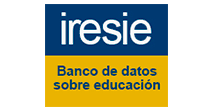IGUALDADE E DIFERENÇAS NA ESCOLA – COMO ANDAR NO FIO DA NAVALHA
DOI:
https://doi.org/10.5216/ia.v31i2.1253Abstract
O ensino escolar brasileiro, nos debates atuais sobre inclusão, tem diante de s o desafio de encontrar soluções que respondam à questão do acesso e da permanência dos alunos nas suas instituições educacionais. Algumas escolas públicas e particulares já adotaram ações nessa direção ao proporem mudanças na sua organização pedagógica, de modo a reconhecer e valorizar as diferenças, sem discriminar os alunos e/ou segregá-los. Apesar das resistências, cresce a adesão de redes de ensino, de escolas e de professores, pais e instituições dedicadas à inclusão de pessoas com deficiência, o que denota o efeito dessas novas experiências e, ao mesmo tempo, motiva questionamentos. Com a intenção de explorar esse debate sobre inclusão e escolaridade, vamos analisar alguns pontos polêmicos que cercam essa situação de mudança, nos dias atuais, diante de inovações propostas por políticas educacionais e práticas escolares que envolvem o ensino regular e especial. Mais do que avaliar os argumentos contrários e favoráveis às políticas educacionais inclusivas, abordaremos, entre seus aspectos mais polêmicos, a complexa relação de igualdade e diferenças, que envolve o entendimento, a elaboração de tais políticas e todas as iniciativas visando à transformação das escolas para se ajustarem aos princípios inclusivos de educação.Downloads
Downloads
Published
How to Cite
Issue
Section
License
Inter-Ação uses the Creative Commons Attribution 4.0 License for Open Access Journals (Open Archives Initiative - OAI) as the basis for the transfer of rights. Open access means making documents available on the Internet free of charge, so that users can read, download, copy, distribute, print, search, or link to the full text of documents, process them for indexing, use them as input data for software programs, or use them for any other lawful purpose, without financial, legal, or technical barriers.
Authors publishing in this journal agree to the following conditions:
1) Authors retain copyright and grant the journal the right of first publication, with the work simultaneously licensed under the Creative Commons Attribution License, which permits redistribution of the work with attribution and first publication in this journal.
2) Authors are permitted to enter into additional, separate agreements for non-exclusive distribution of the version of the work published in this journal (e.g., for publication in an institutional repository or as a book chapter), with attribution and first publication in this journal.
3) Authors are permitted and encouraged to publish and distribute their work online (e.g. in institutional repositories or on their home page) at any time before or during the editorial process, as this may generate productive changes as well as increase the impact and citation of the published work.















